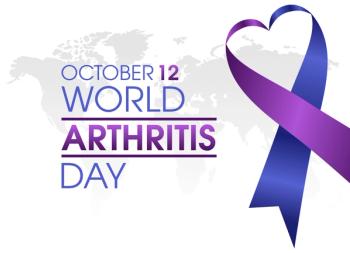
Can Mammograms Also Find Heart Disease?
Study authors found that women whose mammograms revealed calcium buildup in breast arteries were highly likely to have coronary arterial calcification. This "practice changing" finding could allow doctors to spot early heart disease in women where it otherwise would have been missed.
The mammogram—among the most basic health screening tools for women—has the potential to not only spot breast cancer but also heart disease, a more common killer that claims the lives of 1 in 4 women.
A new study shows that calcium buildup in breast arteries—something easily seen in digital mammography—is an early sign of heart disease. What’s more, this indicator works just as well, and perhaps better, than other measures of cardiovascular (CV) risk, such as high blood pressure, diabetes, or elevated low-density lipoprotein (LDL) cholesterol.
The study, from at the Icahn School of Medicine at Mount Sinai in New York City, will be presented in Chicago at the upcoming 65th Scientific Session of the American College of Cardiology, set for April 2-4, 2016. The study appears in the Journal of the American College of Cardiology.1
“This is potentially practice changing,” said study author Laurie Margulies, MD, associate professor of radiology at the Icahn School of Medicine at Mount Sinai, where she is the director of breast imaging at Mount Sinai Hospital.
Even though heart disease poses greater risk for women, they fear breast cancer more and thus are likely to get mammograms, Margulies explained. Using the test for 2 purposes has the potential to detect many more cases of coronary artery disease in time to treat it, with obvious long-term savings for managed care if CV events are avoided. Authors of an accompanying editorial in JACC speculated that women who smoke could one day be screened for breast cancer, lung cancer, and heart disease in a single test.2
Researchers looked at records of 292 women who had digital mammography and noncontrast CT chest scans over a year’s time. Levels of breast arterial calcification and coronary arterial calcification, as revealed on the CT scans, were separately scored and then correlated with Framingham Risk Scores and the 2013 Cholesterol Guidelines Pooled Cohort Equations (PCE).
Overall, measures of breast arterial calcification correlated with coronary arterial calcification 70% of the time, and 63% of those with coronary arterial calcification also had breast calcium buildup. For women under age 60 with known coronary artery calcification, half also showed signs of calcium buildup in breast arteries—an important finding, since younger women may not be thinking about heart disease.
When the researchers looked at 33 women with who had established coronary artery disease but no symptoms, calcium buildup in breast arteries was a more powerful indicator than the Framingham score or the cholesterol PCE. This key finding suggests that mammograms could become the tool for finding “red flags” in women with early heart disease who would otherwise be missed.
“This information is available on every mammogram, with no additional cost or radiation exposure, and our research suggests breast arterial calcification is as good as the standard risk factor-based estimate for predicting risk,” said Harvey Hecht, MD, professor at the Icahn School of Medicine at Mount Sinai and director of cardiovascular imaging at Mount Sinai St. Luke’s Hospital.
Margulies, in a conference call with reporters, called for the results to be confirmed in a larger study.
References
1. Margolies L, Salvatore M, Hecht HS, et al. Digital mammography and screening for coronary artery disease [published March 24, 2016]. J Am Coll Cardiol. 2016; http://dx.doi.org/10.1016/j.jcmg.2015.10.022
2. Nassir K, McEvoy J. Recognizing breast arterial calcification as atherosclerotic CVD risk equivalent: from evidence to action [published March 24, 2016]. J Am Coll Cardiol. 2016; http://dx.doi.org/10.1016/j.jcmg.2015.09.017.
Newsletter
Stay ahead of policy, cost, and value—subscribe to AJMC for expert insights at the intersection of clinical care and health economics.

















































